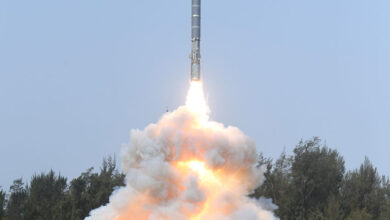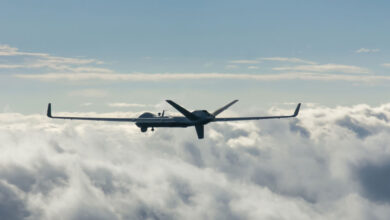Air dominance: Technology for a tactical edge in the skies
- Raytheon Technologies brings advances in engines, weapons and networking
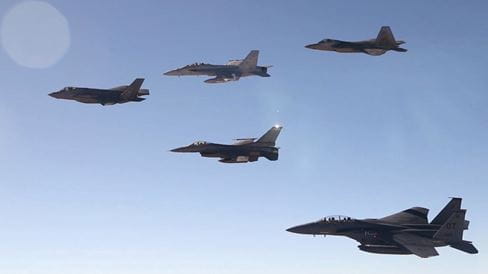
The target: A column of tanks
US, June 7. The tactic: Many miles away, a fighter jet – say, an F-15E, an F/A-18 or an F-35 – drops a volley of smart bombs. Their wings pop out as they glide in formation, their seekers cutting through heavy cloud cover.
On the approach, the data they’ve been ingesting runs through their computer processors. The bombs begin speaking to each other and making decisions: Which one will strike which tank, and in which order. And they’re reporting back to the pilot the whole time.
The result: The tanks, which in an earlier era may have just been pinned down with suppressive fire, are instead destroyed, with no munitions wasted. And the fighter jet that defeated them was never even in the neighborhood.
“This is where we wanted to be the whole time,” said Jon Norman, a retired U.S. Air Force major general who now heads air power requirements and capabilities at Raytheon Technologies. “It’s great to suppress that threat, but much better to destroy it because that opens up an entire lane. That gives you air superiority.”
This is the kind of thing that’s becoming possible thanks to the work of engineers at Raytheon Technologies, which is supplying the U.S. military, its allies and partners with advanced engines, sensors, and weapons – such as the StormBreaker smart weapon described above – to achieve what’s known as air dominance.
Engine power and thermal management
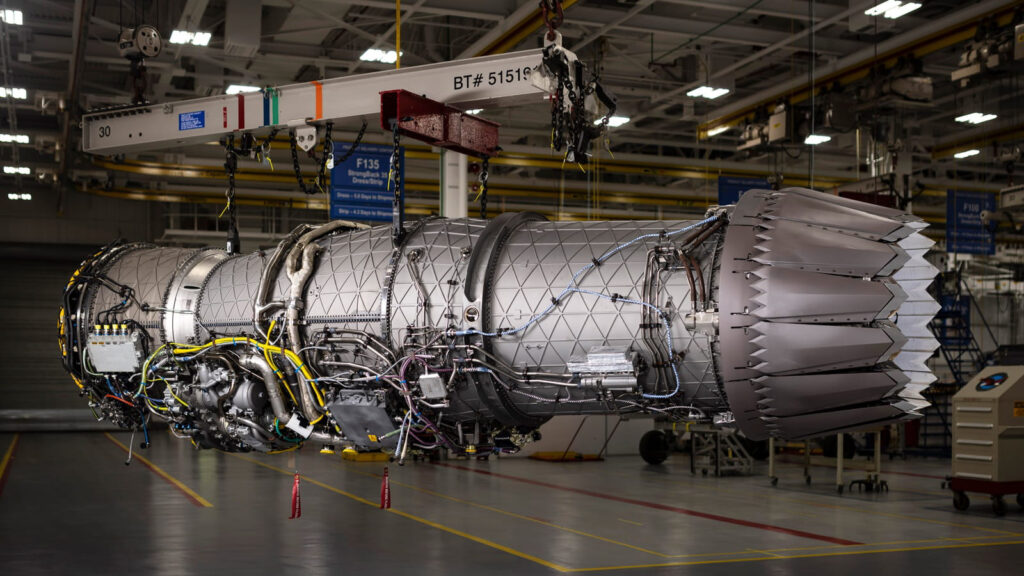
Engines do more than make planes go. They also power the electronics – a critical function for platforms like the F-35, a multirole fighter with a technology stack that makes it more like a flying supercomputer and command post.
The F-35 runs on the strength of the Pratt & Whitney F135 engine, which has powered the plane through multiple upgrades in weapons, software and other systems.
With a new set of F-35 improvements known as Block 4 on the way, Pratt & Whitney, a Raytheon Technologies business, is proposing a redesigned power module for the F135 known as the Engine Core Upgrade. It would bring a boost in range and thrust, along with about $40 billion in cost savings and a significantly faster production schedule than a competing proposal for a new engine.
The Engine Core Upgrade “is the only solution that will field fast enough, in meaningful quantities, to make a difference to the warfighter,” said Jennifer Latka, Pratt & Whitney’s vice president for the F135 program. “From a taxpayer perspective, an upgrade to the existing engine costs a fraction of a brand-new engine.”
Powering the F-35
The Engine Core Upgrade, Pratt & Whitney’s improved power module for the F135 engine, has multiple advantages over a competing proposal for a new engine. Those advantages include:

Additionally, Collins Aerospace, also a Raytheon Technologies business, is proposing a new cooling system for the F-35 that would not only keep the plane’s many electronic systems running but also reduce strain on the engine.
The Enhanced Power and Cooling System, or EPACS, offers more than twice the capability of the F-35’s current cooling mechanism, in part through its efficient use of “bleed air,” or compressed air from the engine – air that the engine would otherwise use to create propulsion. When cooling systems use more of that air than the engine was meant to provide – as the current cooling system does – it forces the engine to run hotter, increasing wear and tear.
Beyond solving the bleed-air problem, EPACS introduces minimal risk – it consists of subsystems that have millions of hours of in-flight experience – and it opens the door for future F-35 upgrades.
“Our near-peer adversaries are continuing to improve their technology. We can’t stagnate,” said Matthew Pess, an associate director of systems engineering at Collins Aerospace. “We have to provide capability that is overwhelmingly better than theirs, or else we’re going to find ourselves in a fight where we don’t have a technology advantage and we don’t have a force advantage. And that’s not where we have ever been, and that’s not where we intend to be in the future.”
The need for advanced thermal management extends beyond the F-35. It will also be crucial for future fighter jets, which include the Air Force and Navy Next Generation Air Dominance programs in the U.S.; the Future Combat Air System in France, Germany and Spain; and the Global Combat Air Programme in the UK, Italy and Japan.
“This goes not just to heat dissipation, but also to power generation and distribution,” said Patrick O’Brien, a director of strategy and business development at Collins Aerospace. “You have directed energy weapons and lots of communications and guidance requirements that are driving power requirements substantially higher.”
Advanced and networked weapons
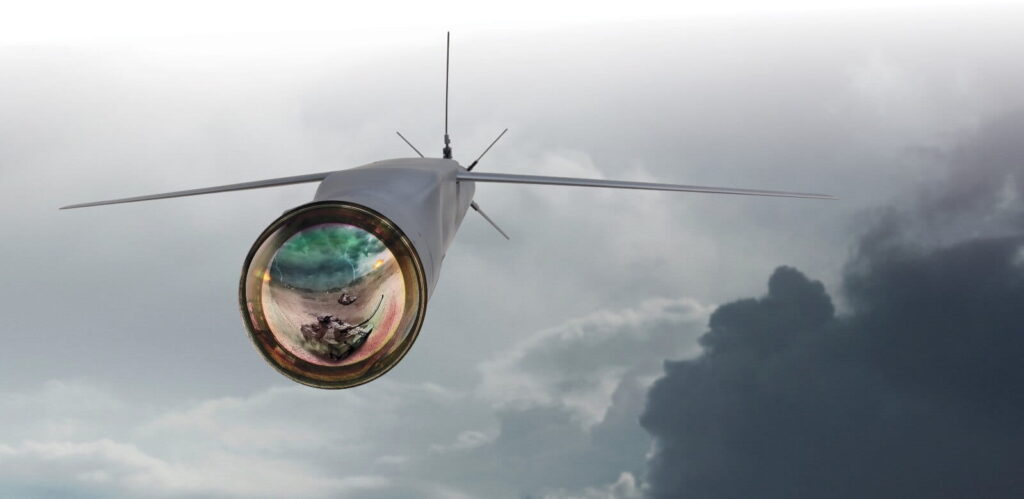
They still call it the AMRAAM Missile, but inside, it’s worlds different from the version Norman knew in his days flying the F-16.
The latest variant, known as F3R for “form, fit, function refresh,” includes new software, newer, faster processors and 15 upgraded circuit cards in the guidance section.
“It’s like the first Porsche 911 to what we have today. Same name, fundamentally different car,” Norman said. “The software unleashes all the core capacity of that weapon. We can process everything faster. We can do our countermeasures faster. We’ve greatly enhanced the range.”
Now, for example, the missile can deploy against targets well beyond the pilot’s visual range. That kind of capability opens up options for commanders, Norman said – specifically in coalition scenarios, with allied forces distributed over great distances against common adversaries.
To Norman, it’s all a new way of validating an old idea: Many successful surface missions begin in the air.
“It goes all the way back to the establishment of the Air Force as an independent service. What they showed was, unless you control the air, you run a huge risk of losing on the surface. They don’t have the freedom to operate, the freedom to attack,” he said. “If we can prevent, through air dominance, those threats from holding them at risk, that gives them greater capability.”
Advanced sensors
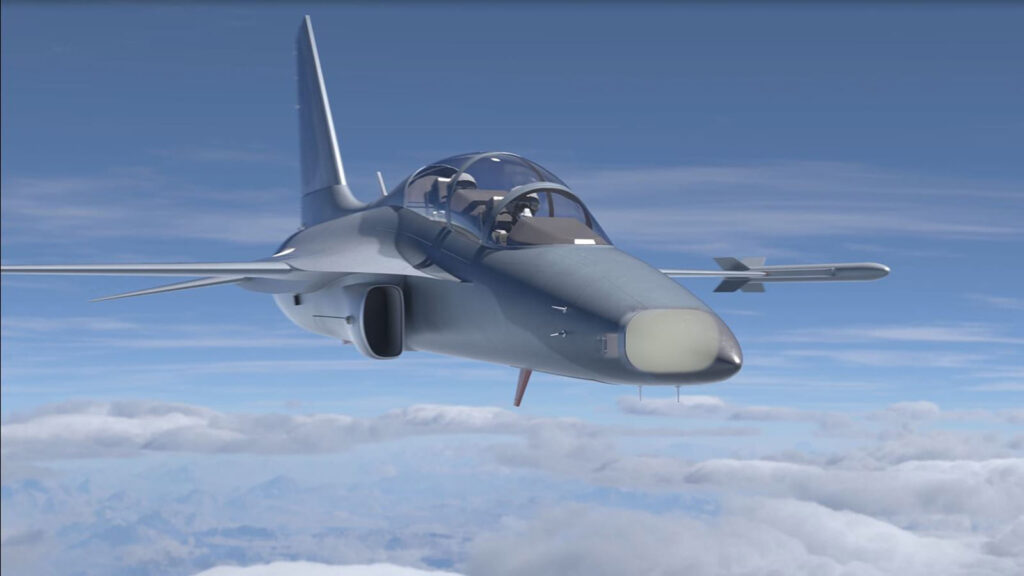
Advanced sensors can put power back into older fighter jets – especially those with niche roles.
For example, the F-15E is valuable in strike scenarios because it carries more weaponry than the F-35, which stores its armaments inside the airframe to maintain its stealth advantage. So if the F-15E is the best-armed fighter on a mission, it only makes sense to give it the best targeting information available.
One recent advancement is the PhantomStrike fire-control radar, which puts the power of active electronically scanned array in a much smaller form factor. The new radar weighs about half as much as modern AESA radars, it takes up less room and uses about 65 percent less power. That makes it a good fit for platforms such as UAVs, rotary-wing aircraft and light-attack fighter aircraft.
“PhantomStrike is our latest revolutionary radar,” said Bryan Rosselli, president of Advanced Products and Solutions at Raytheon Technologies. “It’s critical for our customers to have more aircraft flying capable sensors in an evolving threat environment. And it’s our responsibility to help them achieve and maintain air dominance with powerful technology that is smaller, more affordable and easier to maintain.”
Another advantage: The radar uses open mission systems architecture, an approach militaries favor because it makes systems cheaper and easier to upgrade.
Networked platforms

With multiple U.S. friends and allies developing sixth-generation fighters and using proprietary technology, making sure those platforms can communicate as a coalition will be a key to air dominance, said O’Brien, whose business specializes in secure radio communications among military platforms.
Secure communications means more than keeping adversaries from eavesdropping – it detail. It’s similar to cross-platform play in the video game world, where players collaborate in real time, on different consoles, with computer clouds in the middle tailoring what each player sees.
“They have to figure out how to partition effectively to support both their own security and interoperability,” O’Brien said. “Every nation has to be able to protect its own integrity through what’s accessible in the system. It’s a highly complex problem to solve.”



